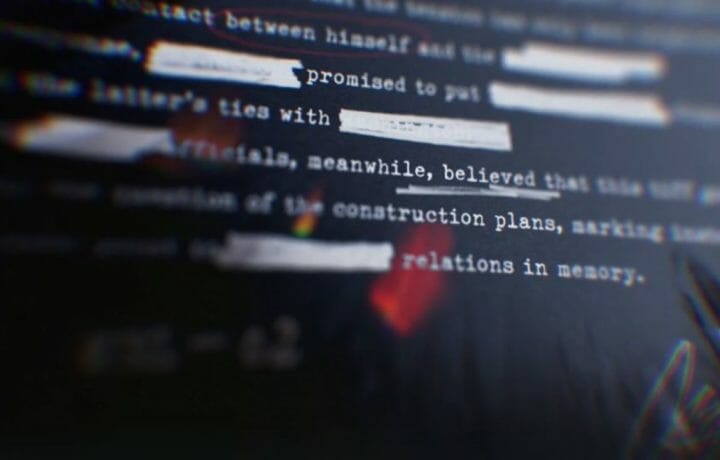Ewa Ciszak, an employee of the Missile Defense Agency, allegedly sanitized classified documents by snipping away details she considered sensitive and then placed them into her backpack to walk them out of a secure facility. The bag didn’t just hold gym gear. She repeated this pattern for months (maybe more). Now she’s facing a federal charge under 18 U.S.C. § 1924 for unlawful retention of national defense information.
Ciszak’s case isn’t unusual. Year after year, people with access to classified information step outside the rules. The story is often the same, whether the person is an engineer, sailor, or ex-CIA director. They don’t sell secrets. They just take them. They convince themselves it’s fine to remove national property for their reasons. Most do not face charges of spying. They’re simply people who ignored the rules and thought they knew better.
Cisak’s case is intriguing, as the timeline within the court documents shows us that the FBI was actively surveilling her from February 2025 through June 18, 2025. The paperwork fails to disclose the specific event that triggered this insider’s increased scrutiny and FBI surveillance. Reflecting on my past experiences, it seems that the program for managing insider risks at the Missile Defense Agency was functioning well – someone likely reported a concern. Perhaps it was the classified clippings pulled from the retained documents within the burn bag. Possibly it was that she neglected to return a document to a classified container that she had requested open, an action that was documented. Maybe it was simply the use of the printer (really, how often do we print these days when an email attachment is so crisp?) that brought the eyes of the AFOSI upon her.
We are aware that the FBI surveillance began in February. It’s unclear whether she received a reprimand for mishandling classified information before this incident. They put her under surveillance, and she did not disappoint. The criminal complaint tells us she was observed multiple times, to include the day the FBI obtained a search warrant, June 18, taking classified documents out of the building in her backpack. She accepted the risk that there would not be a bag check as she was departing, and apparently, she was right.
Why did the investigation take so long, from February to June? Investigators must determine what it is they have. They knew they had an individual pulling classified documents and then carrying them home to her residence. That was all they knew. The intervening months allowed the FBI and AFOSI to determine if there was an illicit and covert relationship with a hostile service or entity. Now that she is in custody, there will be time to address the many unanswered questions.
Don’t for a second think that Ciszak is an anomaly; she is just one in a long list of individuals who decided they knew best on how to treat classified materials; here are a few to whet one’s curiosity.
- Harold Martin (NSA, ~1996–2016): Hoarded over 50 terabytes of TS/SCI material over two decades—including physical documents, CDs, and USB drives—some of which were buried in his backyard in plastic containers. The FBI discovered the hoard during a search. Harold Martin received a sentence of nine years in prison and three years of supervised release.
- Nghia Hoang Pho (NSA, 2010–2015): Took Top Secret cyber tools home to work on for career advancement; his unsecured computer was later compromised by Russian malware. A broader internal security audit discovered the compromise. Nghia Hoang Pho received a sentence of 66 months in prison and three years of supervised release.
- Izaak Vincent Kemp (AFRL/NASIC, 2016–2019): Printed and removed roughly 2,500 pages of classified materials while working as a contractor, storing them at his home. Discovery came during a police raid for an unrelated investigation. He received a sentence of one year and one day in prison.
- Kendra Kingsbury (FBI, 2004–2017): Retained 386 SECRET documents over 12 years, spanning intelligence on terrorist groups and internal FBI programs. Motivation remains unclear. The discovery of these documents occurred during a post-employment security audit. The court sentenced him to 46 months in prison.
- Kristian Saucier (U.S. Navy, 2009): Took cell phone photos of restricted spaces aboard a nuclear submarine, kept them post-service, and later destroyed digital evidence. The discovery stemmed from a recovered phone. Kristian Saucier received a sentence of 12 months in prison, which was followed by home confinement and supervised release.
- Severo “Nonoy” Gaa (U.S. Navy, Hawaii): Retained classified logistics documents during service, later discovered through a counterintelligence probe involving potential foreign contact with the Philippines. The charges against him were reportedly under 18 U.S.C. 793(e); however, the details of his sentencing have not been publicly confirmed.
- Margaret Anne Ashby (DoD, Georgia, 2022): Removed Top Secret materials over a four-month span and stored them both physically and digitally at her home. Discovered internally. She received a sentence of 36 months in prison, a $15,000 fine, and three years of supervised release.
- John Deutch (CIA Director, 1995–1996): Handled Top Secret/SCI material on unsecured personal computers connected to the internet, which he retained after leaving office. A CIA Inspector General investigation found evidence of his post-tenure activities. President Clinton preemptively pardoned him in 2001.




